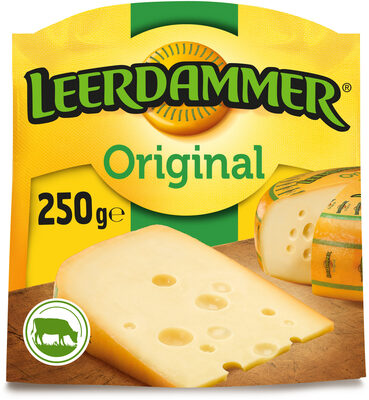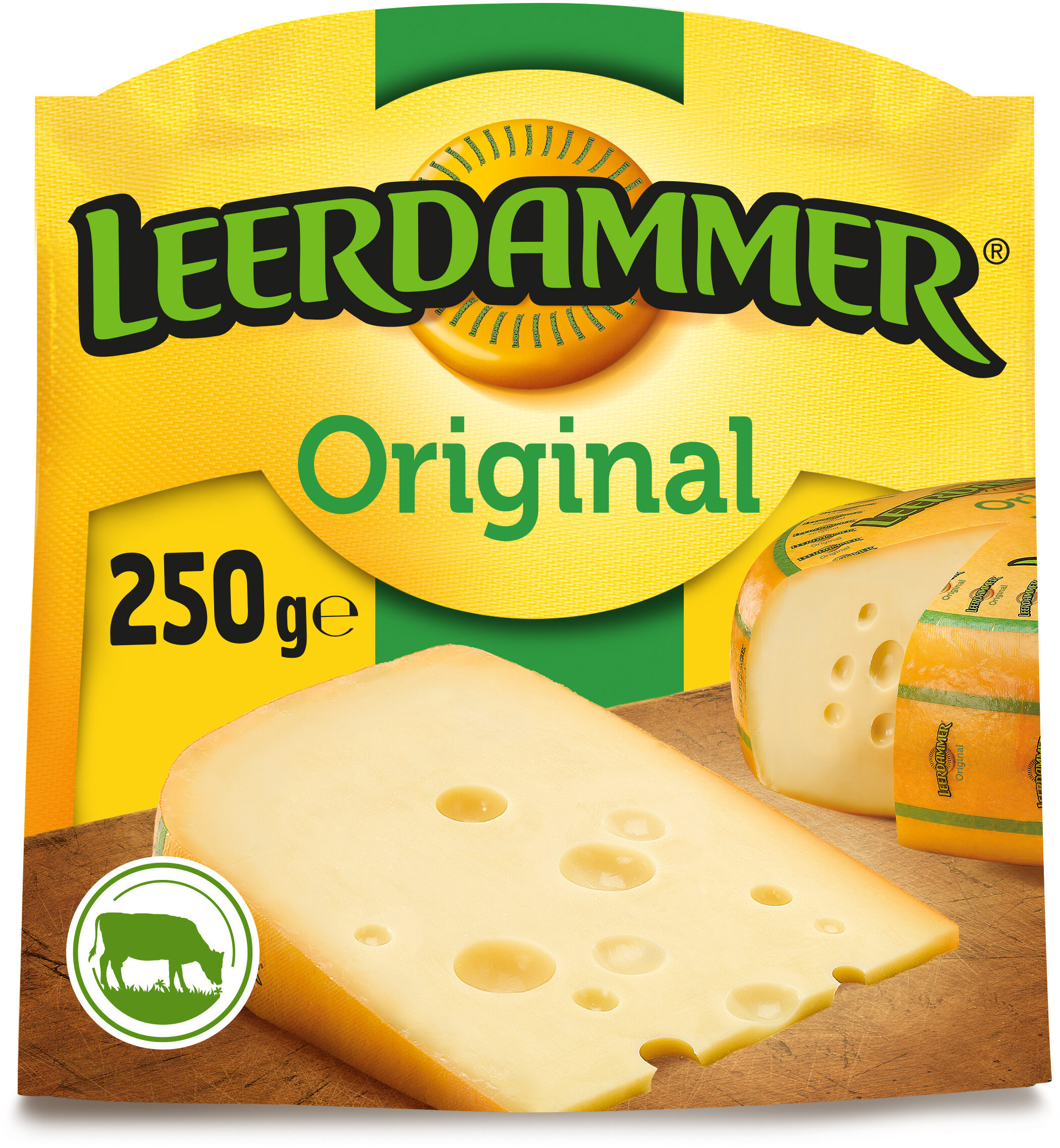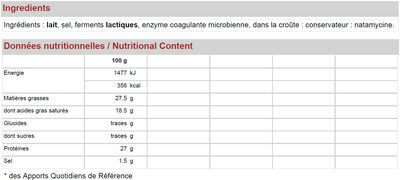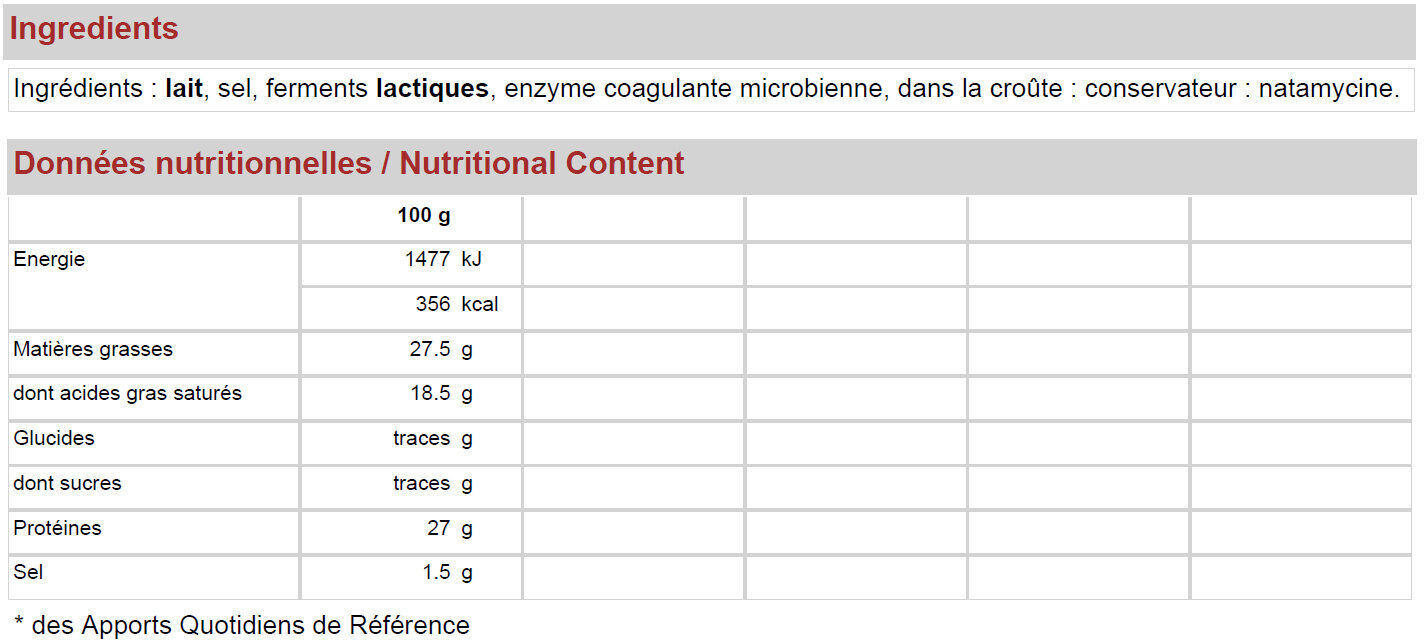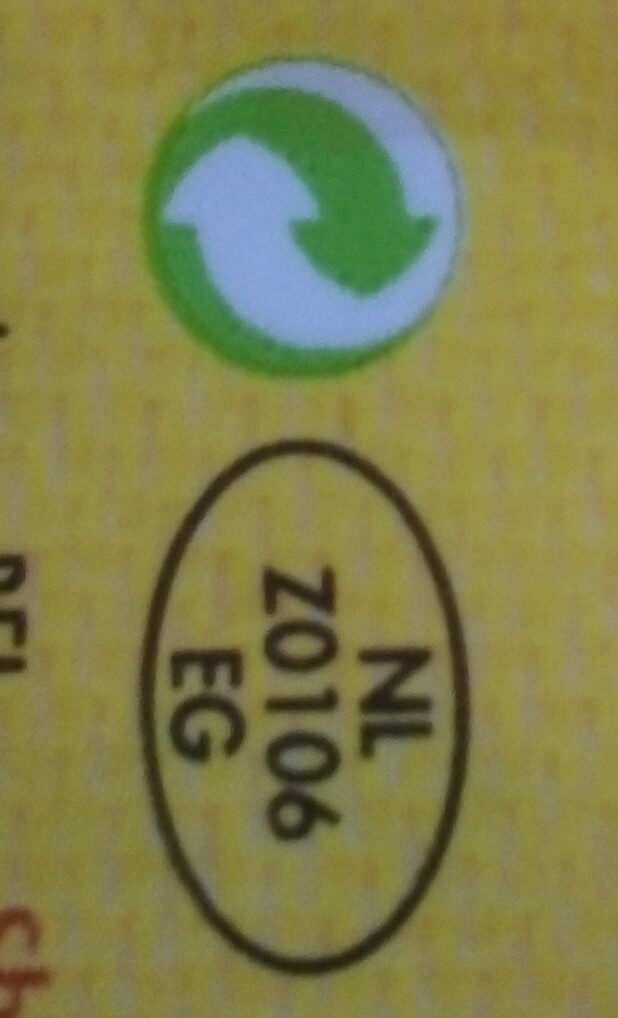Leerdam portion - Leerdammer - 250 g
This product page is not complete. You can help to complete it by editing it and adding more data from the photos we have, or by taking more photos using the app for Android or iPhone/iPad. Thank you!
×
Some of the data for this product has been provided directly by the manufacturer Bel France.
Barcode: 8721800082110 (EAN / EAN-13)
Common name: Fromage
Quantity: 250 g
Packaging: Plastic, Bag, Fresh, Packaging
Brands: Leerdammer, Bel, Leerdammer original
Categories: Dairies, Fermented foods, Fermented milk products, Cheeses, Pasteurized cheeses
Producer: Fromageries Bel
Manufacturing or processing places: Pays-Bas
Traceability code: NL Z0106 EG
Link to the product page on the official site of the producer: https://www.ribambel.com/leerdammer/nos-...
Stores: Magasins U, Delhaize, carrefour.fr
Matching with your preferences
Other information
Conservation conditions: Tenir au froid entre +4°C et +8°C
Customer service: BEL, BP 114 - 92151 SURESNES CEDEX ? France
Report a problem
Data sources
The manufacturer Bel France uses Equadis to automatically transmit data and photos for its products.
Manufacturers can use the Open Food Facts free plaform for producers to access and complete this data, and to obtain reports, analysis and product improvements opportunities (e.g. better Nutri-Score).
Product added on by openfoodfacts-contributors
Last edit of product page on by inf.
Product page also edited by beniben, countrybot, date-limite-app, driveoff, ecoscore-impact-estimator, fgouget, kiliweb, lrd, lucie-mousnier, magasins-u, org-bel-france, org-groupe-bel, packbot, quechoisir, quentinbrd, segundo, tacite, tacite-mass-editor, yuka.VGZ3ZURxWXFqY3RSeHZZQjJRM3EyTXRzeTdtQVFEaU9JZkZQSVE9PQ, yuka.WVk0c0Q2QXJvTk0ydFBRUDJCelM1NHRlK3E2eWJFMkxMOG91SVE9PQ, yuka.YW9BZUFQVWJxTUlhaHMwLy9oYnkvdEFvd0p5Z1FrM3FFZmMvSUE9PQ, yuka.YmFFbkRma3ppdVlhb2NJYzNnNzQ0Y0pJdzZTVUFWR0hkOVlxSVE9PQ, yuka.ZTVFUUlvWWMrc0FCdnZCdTRFbk15b2dvNnBtU2JVT3VLL1U5SVE9PQ.
